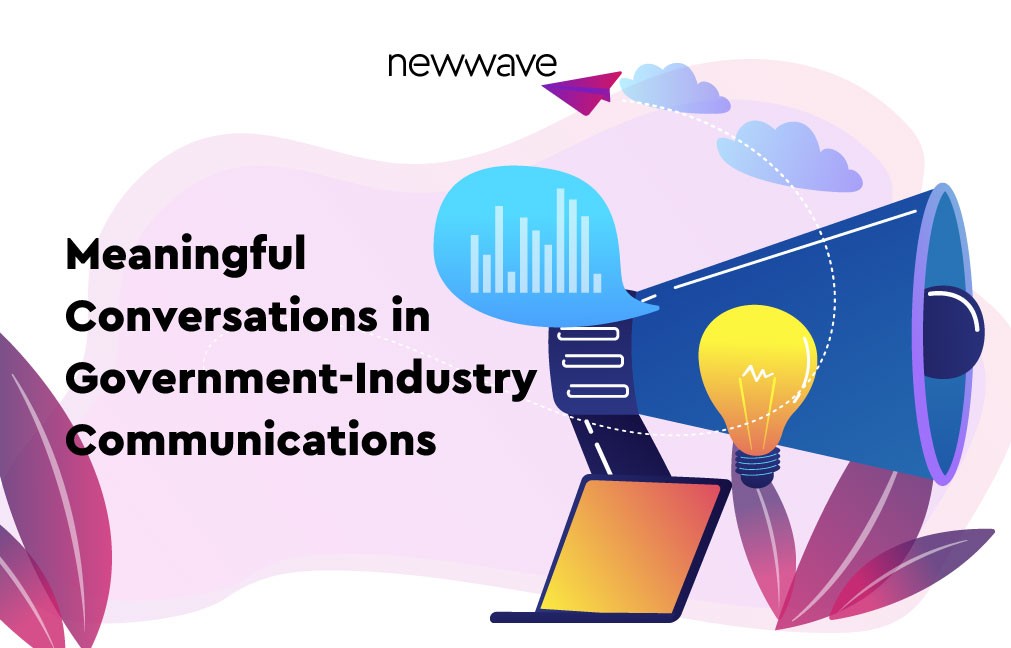Recently, I was part of an all-day training program for government contractors that was put on by Brian Hebbel, a former CMS colleague and lead contract manager. The topic that I presented, along with Brian, was how vendors could have more effective meetings with Federal officials. While the topic encompasses more than health, it is very appropriate to the government health sector because that is where some of the largest government-industry interactions occur.
Both sides should strive to communicate effectively and work together towards a common goal, supporting the organization’s mission and the best use of taxpayer dollars. Over twenty years ago at GSA, I helped to lead a government-industry communications effort which resulted in some major changes in how procurement communications are done. Unfortunately, today we find ourselves still grappling with government-vendor communications issues. Rather than trying to distil several hours of discussion into a 900- word blog, I am going to discuss four key ideas for driving meaningful conversations between vendors and government officials.
1. Vendors should try to focus their meetings with government officials on showing how they can help solve a problem rather than spending most of the meeting pitching a sales deck. The government health area today is growing increasingly more complex with changing care and payment models, rapid technology innovation, vast new sources of and uses for data; and government policies that are constantly evolving and often politically motivated. Add to this a growing number of skill gaps among government business and technical staff, and you have a real need for contractors who can help solve problems in an effective and cost-efficient manner. Vendors need to change their focus from themselves to developing a better understanding of their clients’ needs and challenges.
2. Government officials need to develop a mindset that effectively communicates and transparency with industry is not only desirable, but critical to ensuring they receive the best value for the agency and the taxpayer. Often, government officials hide behind regulations and time constraints to limit the flow of information at various times before, during, and after the procurement process. Information that is made public is not done in a way that is vendor-friendly, opening a vast market for third parties who basically repackage and sell government information to vendors, passing on a “hidden” cost to the government. Another challenge for industry trying to understand government needs is that the information that is provided publicly varies from agency to agency. CMS has developed a much more proactive approach including monthly public “tech topic” presentations with slides posted to the web, monthly updates to their upcoming procurements list, and frequent speaking at both CMS and industry events. Unfortunately, the CMS.gov website, while it contains a lot of useful information about programs and policies, still is often difficult to navigate, even for someone like myself who spent almost 9 years at the Agency.
3. Better partnering between vendors to help solve agency problems. One of the recommendations that Brian and I made at our session was for vendors to meet with government officials in a group, at least sometimes, rather than just individually. No vendor “controls” the entire technical infrastructure of an organization and it was frustrating for me to watch the finger-pointing between vendors when operational problems occurred. One of the things I asked several vendors who shared responsibility for the CMS Shared System area, was to meet with me as a group on a regular basis and jointly show me how they could make changes to help CMS claims processing work better. We got some great ideas out of that effort.
4. Don’t just talk innovation, demonstrate. As I mentioned above, government health leaders face many challenges today and, for the most part, do not get enough funding to make the large overhauls needed to change a technical architecture or business model immediately. Typically changes occur through an evolutionary process that takes time unless there is additional funding and deadlines provided by a new program. That’s why it is more important than ever for both government and industry to be proactive in working with each other to infuse new technology and business solutions into government work. This can occur at the larger strategic level in helping define the policies around the use of Al, for example, or more tactically promoting innovation to solve a specific agency challenge. There is the perception that government contractors are more interested in winning a procurement or maintaining an existing position than bringing true innovation to bear on a government challenge. Fair point. But their solutions are also driven by government requirements and budget constraints. The government often can be very prescriptive, and industry can churn out white papers or unsolicited proposals, but a better way to solve problems has been demonstrated with the government challenge efforts of recent years. These bring both industry and government together to drive innovative solutions. We need more of these types of interactions that promote not just challenges but more structured longer-term solution efforts. Government-industry associations can help if they aren’t derailed by overzealous vendor business development staff.
I could add many more points to this blog but most importantly both government and industry need to see the world more from each other’s perspectives. Government should be transparent and easy to understand. Industry needs to be sensitive to government challenges and present their solutions in a way that stresses partnership, innovation, and most of all, helps further the Agency mission. All of us, as the ultimate consumers of government programs, should desire no less.


